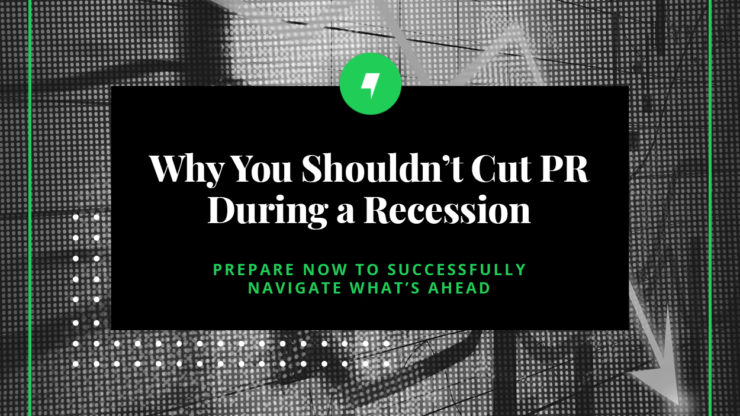With the Phillies in the World Series, we may see tougher economic times ahead. (The Phillies won the championship in 1929, 1980 and 2008. Let’s just say it wasn’t a home run for the markets). I’m 100 % rooting for the Phils, but it never hurts to be prepared for what could be a major league economic bummer.
It can be tempting to cut PR resources during a recession. However, earned media and strong integrated communications counsel during a downturn will ensure your company stays top-of-mind when clients return to their usual programming.
Here at Maven, we’ve navigated some tough economic times with clients, including the Great Recession in 2008 and COVID-19. What we’ve learned is that clients who keep their relationships with customers, stakeholders, and influencers intact are always the first to recover. They are also able to keep telling their story in new and innovative ways that build brand loyalty.
During COVID, many of our clients had to pivot in unexpected ways. They donated PPE, became first responders, and moved their operations online. We were right there beside them, helping them craft the right message to stakeholders that made a measurable impact.
One of many such examples is from Pennrose, a leading developer of affordable and market rate housing. During the pandemic, we pivoted away from ribbon cutting and public events. Instead, we ramped up thought leadership and earned media efforts, advocating for the importance of more affordable housing, and showcasing how developers can support residents during tough economic times. By sharing localized impact stories, we secured 10 feature stories in a few short weeks, allowing Pennrose to earn 50% share of voice compared to its top competitors.
So instead of scaling back, here are some ways to make your PR budgets work you:
Measure Impact
One main reason PR budgets get cut is because agencies and in house teams do not show ROI. Without effective data, it’s hard to show value. For years, some agencies provided (and still provide) quasi-metrics like ad equivalencies. These metrics are virtually meaningless as they do not showcase how your PR efforts impact behavior and support your business.
We now have so many better ways to measure value thanks to digital measurement tools, Google analytics and social media. We can see in real time how our earned media and social media efforts impact attitudes and behavior. By setting clear goals and measuring results, you can make the most of your PR investment by doubling down on what works and abandoning less impactful efforts.
Lean in to Owned Media Channels
Clients and consumers now expect to engage with B2B and B2C brands online. An owned channel is one that your company controls – think about your company LinkedIn page, twitter, and Instagram account. When budgets are scarce, nothing beats free (or in the case of digital advertising, very low cost). Leverage these publishing platforms to position your executives as thought leaders, communicate with stakeholders, and present your firm as an innovator. If you stop communicating, people will expect the worst. Ramp up the cadence of your communication and take the time to engage with potential prospects and stakeholders. This will help elevate your brand and keep you front of mind.
Target Key Trades and Local Media
If I had a penny for every time a client wanted to be on the front page of WSJ, I could have sold Maven and moved to Hawaii years ago. For some clients, a major national news story makes sense. For most, it’s better to target smaller, niche trade publications that your customers and partners read.
Local and hyperlocal outlets can also be invaluable. If your firm donates to the town fire department, spend your PR resources chasing the local reporter to tell him how that money has impacted the community. Then leverage your owned media channels to tell an even bigger story about how this one donation is part of a broader strategy for community investment.
Whether the Phillies win or lose, we can’t control the economy. But companies can make savvy moves now to position themselves as thought leaders and cement their relationships with customer and partners. Those that do will be rewarded with even stronger brand positioning once the market rebounds.
Posted In Public Relations
 Rebecca Devine
Rebecca Devine 